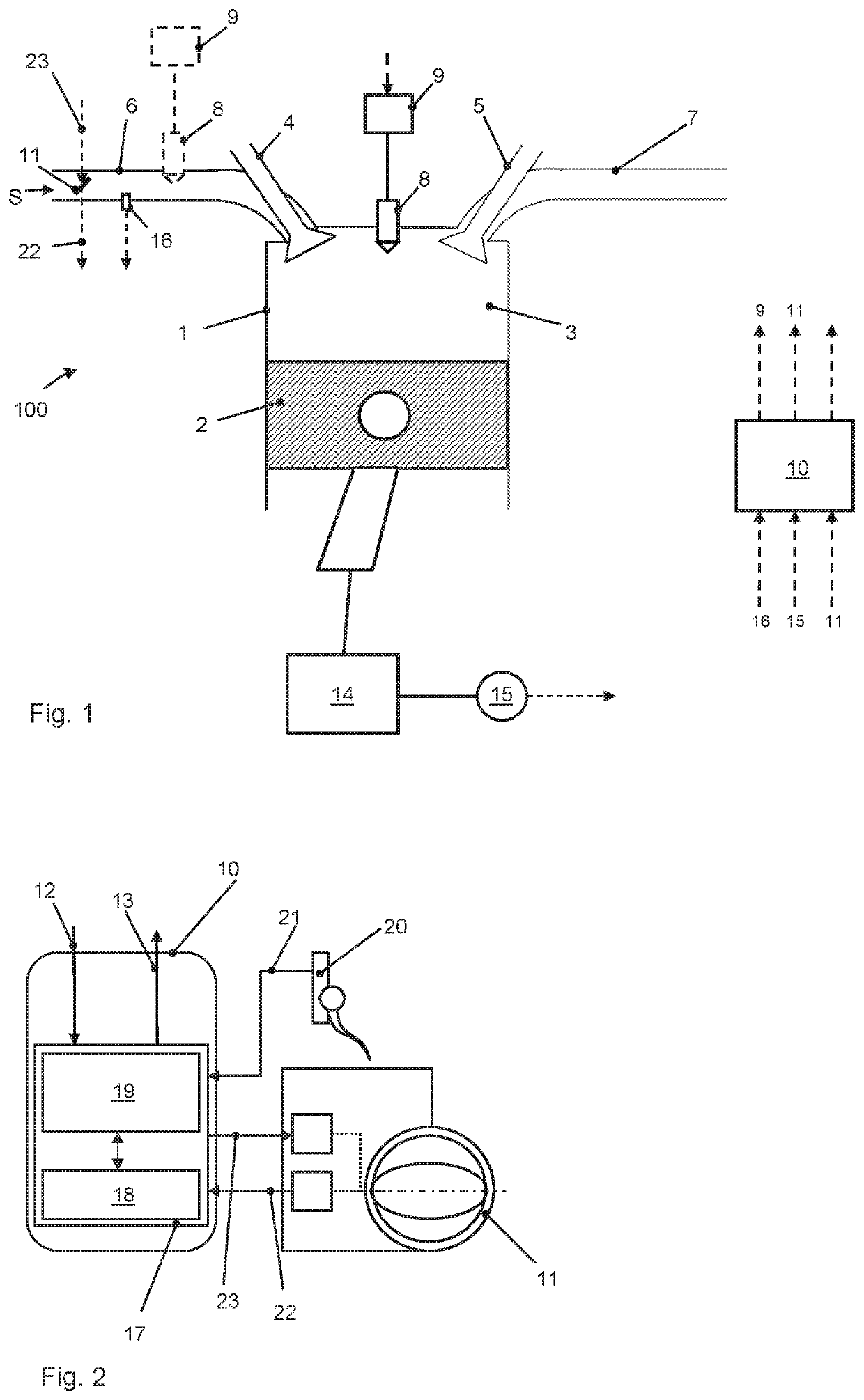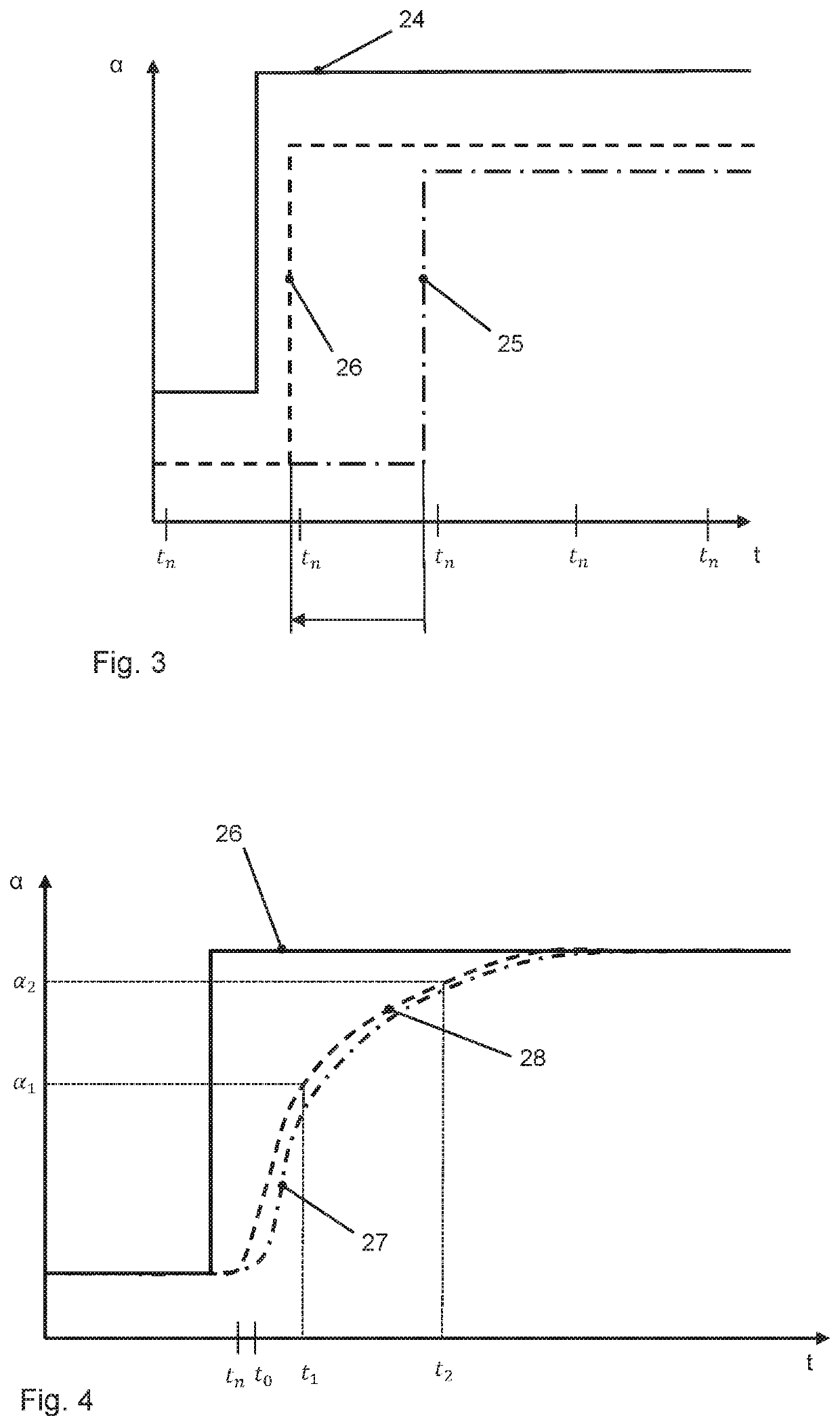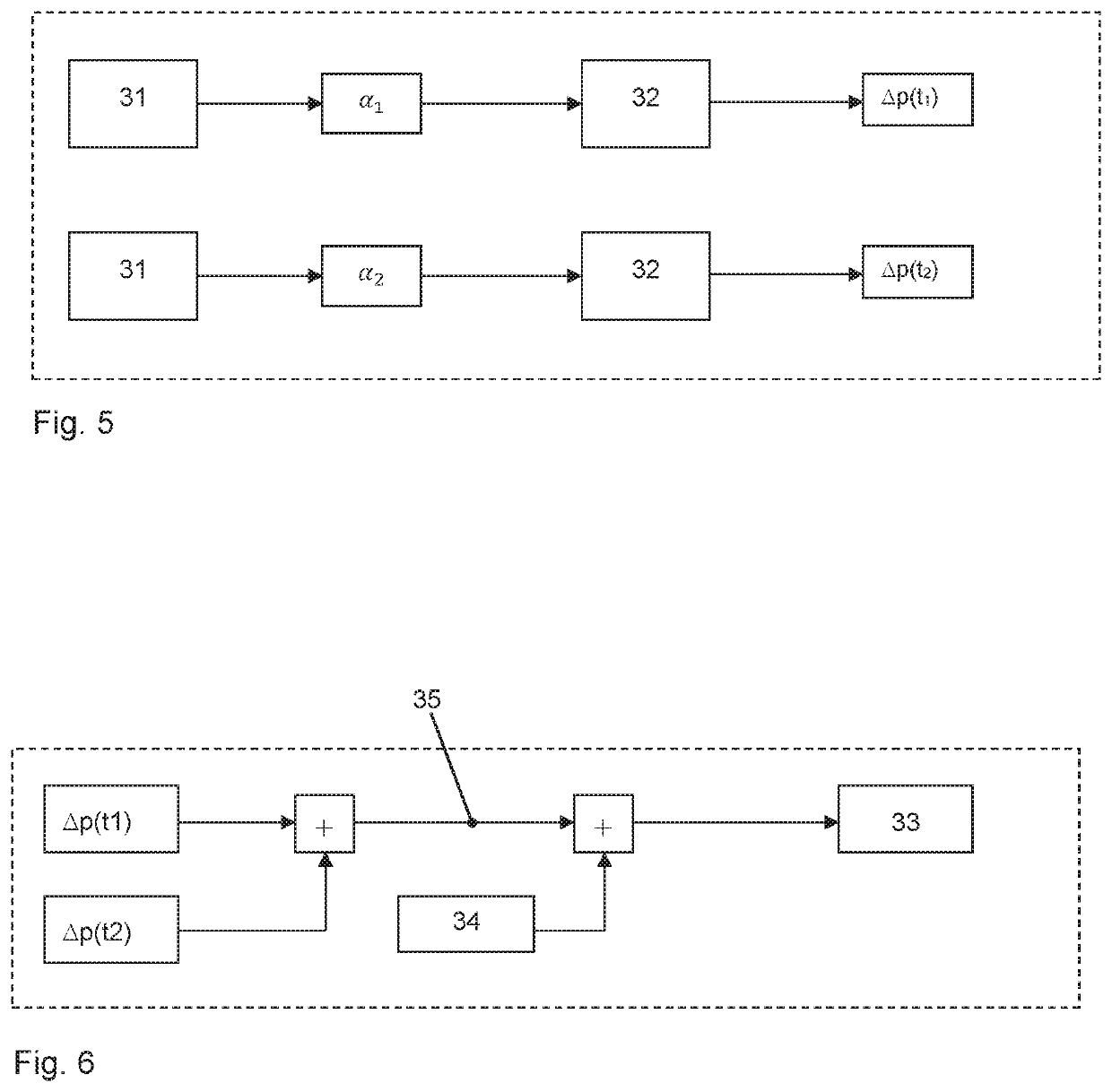Method for determining an air volume in a combustion chamber of an internal combustion engine
a combustion chamber and air volume technology, applied in the direction of machines/engines, electric control, instruments, etc., can solve the problems of reduced load change dynamics, undetermined actual air charge in the combustion chamber, unwanted, etc., and achieve the effect of reducing engine misfiring
- Summary
- Abstract
- Description
- Claims
- Application Information
AI Technical Summary
Benefits of technology
Problems solved by technology
Method used
Image
Examples
Embodiment Construction
[0045]FIG. 1 schematically shows an internal combustion engine 100 having internal mixture formation (direct injection) and, alternatively, external mixture formation (manifold injection, dashed line representation). Shown is one of a plurality of cylinders 1 having piston 2 that define combustion chamber 3. Combustion chamber 3 is optionally sealed by an intake valve 4 or an exhaust valve 5 or communicates with intake manifold 6 or with exhaust pipe 7.
[0046]Fuel injection motor 8, which is actuated by an actuating element 9 and injects fuel directly into the combustion chamber, leads into combustion chamber 3. For that purpose, actuating element 9 receives control signals from an engine management 10.
[0047]Optionally, fuel injection motor 8, together with actuating element 9, may also lead into intake manifold 6 (dashed line representation). It is then a question of an engine 100 having external mixture formation and manifold injection.
[0048]Configured in intake manifold 6 is throt...
PUM
 Login to View More
Login to View More Abstract
Description
Claims
Application Information
 Login to View More
Login to View More - R&D
- Intellectual Property
- Life Sciences
- Materials
- Tech Scout
- Unparalleled Data Quality
- Higher Quality Content
- 60% Fewer Hallucinations
Browse by: Latest US Patents, China's latest patents, Technical Efficacy Thesaurus, Application Domain, Technology Topic, Popular Technical Reports.
© 2025 PatSnap. All rights reserved.Legal|Privacy policy|Modern Slavery Act Transparency Statement|Sitemap|About US| Contact US: help@patsnap.com



